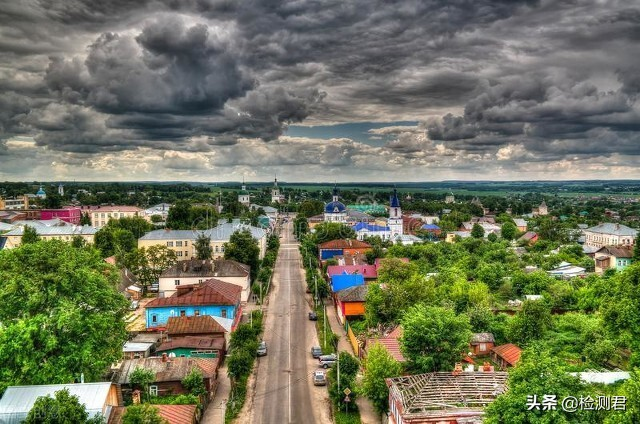The Russian-Ukrainian conflict, so far the talks have not achieved the expected results.
Russia is an important energy supplier in the world, and Ukraine is a major food producer in the world. The Russian-Ukrainian war will undoubtedly have a major impact on the bulk oil and food markets in the short term. The price fluctuation of chemical fiber caused by oil will further affect the price of textiles. Stability will cause certain difficulties for textile enterprises to purchase raw materials, and exchange rate fluctuations, sea and land obstacles are undoubtedly major constraints faced by foreign trade enterprises.
The deterioration of the situation in Russia and Ukraine has had a serious impact on the textile industry.
Mango, Zara, H&M exports
New orders fell 25% and 15%
India’s main textile and garment production concentration areas are seriously damaged
Relevant sources in India said that due to the relationship between Russia and Ukraine, major global clothing brands such as Mango, Zara, H&M have suspended their business in Russia. Spanish retailer Inditex has closed 502 stores in Russia and stopped online sales at the same time. Mango closed 120 stores.
The southern city of Tirupur in India is the country’s largest garment manufacturing center, with 2,000 knitted garment exporters and 18,000 knitted garment suppliers, accounting for more than 55% of India’s total knitwear exports. The northern city of Noida has 3,000 textiles It is a service export enterprise with an annual turnover of nearly 3,000 billion rupees (about 39.205 billion US dollars).
These two major cities are India’s main textile and garment production concentration areas, but they are now seriously damaged. According to reports, new export orders from Mango, Zara, and H&M have dropped by 25% and 15% respectively. The main reasons for the decline include: 1. Some companies are worried about the transaction risks and payment delays caused by the brinkmanship of Russia and Ukraine. 2. Transportation costs continue to climb, and the movement of goods through the Black Sea has stagnated. Exporters have to turn to air freight. Air freight costs have soared from 150 rupees (about 1.96 US dollars) per kilogram to 500 rupees (about 6.53 US dollars).
The logistics cost of foreign trade exports has risen by another 20%
High logistics costs continue to be staged
Since the outbreak of the new crown pneumonia epidemic, especially in 2021, “one cabinet is hard to find” and the high international logistics cost has become the biggest problem that plagues textile foreign trade enterprises. With the international oil price reaching a new high in the previous stage, the trend of high logistics costs is still going on this year.
“After the Ukrainian crisis broke out, international oil prices have skyrocketed. Compared with before, the logistics cost of foreign trade exports has increased by 20%, which is unbearable for enterprises. At the beginning of last year, the cost of a shipping container was more than 20,000 yuan. Now It will cost 60,000 yuan. Although the international oil price has dropped slightly in the past few days, the overall operation is still at a high level, and the high logistics cost will not be significantly relieved in the short term. In addition, due to the strike at foreign ports caused by the global epidemic, it is expected that the high logistics price will remain high. It will continue.” A professional who has been engaged in European and American textile foreign trade business for many years expressed his current difficulties.
It is understood that in order to resolve the high cost pressure, some foreign trade companies exporting to Europe have switched from sea freight to land transportation of China-Europe freight trains. However, the recent situation in Russia and Ukraine has also greatly affected the normal operation of China-Europe freight trains. “Now the delivery time for land transportation has also been significantly extended. The China-Europe train route that could be reached in 15 days in the past now takes 8 weeks.” A company told reporters this way.
Raw material prices are under pressure
Cost increases are difficult to transmit to end products in the short term
For textile enterprises, due to the soaring oil prices brought about by the Russian-Ukrainian war, the prices of fiber raw materials are now rising, and the increase in costs is difficult to transmit to end products in the short term. On the one hand, the purchase of raw materials cannot be in arrears, and the delivery of finished products cannot be paid in time. Both ends of the production and operation of the enterprise are squeezed, which greatly tests the development resilience of the industry.
An industry person who has received orders from Europe and the United States for many years also told reporters that now the powerful domestic trading companies receive orders, basically they are deployed in two production bases at home and abroad, and large orders are placed abroad as much as possible. “For example, the French fashion brand MORGAN (Morgan) orders, the US Levi’s (Levis) and GAP jeans orders, etc., generally choose Bangladesh, Myanmar, Vietnam, Cambodia and other overseas bases for production. These ASEAN countries have relatively low production costs, and can enjoy some preferential export tariffs. Only some small batches and relatively complex process orders are reserved in China. In this regard, domestic production and processing have obvious advantages, and the quality can be recognized by buyers. We use this arrangement to Balance the company’s overall foreign trade operations,” he said.
A professional from a well-known Italian textile machinery equipment manufacturer said that the manufacturing industry is now generally globalized. As a machinery and equipment manufacturer, the prices of various raw materials such as copper, aluminum, and steel required for the production of precision equipment are rising. Enterprises are under greater cost pressure.
Post time: Aug-10-2022






